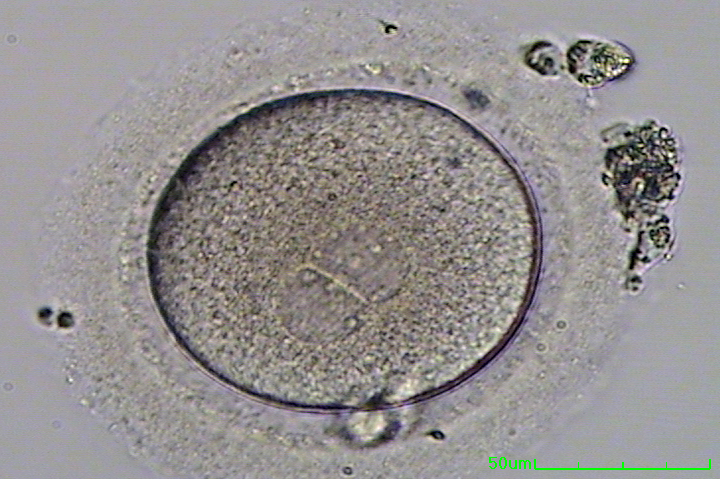
Fertilization is a complex process that requires many steps.
Sperm must have the ability to reach a mature oocyte (egg) and bind with the oocyte. In turn, the oocyte must block polyspermy (an abnormal situation where more than one sperm enters the oocyte). Finally, the sperm and oocyte must form pronuclei. Intracytoplasmic sperm injection, or ICSI, can overcome many of these obstacles.
All cells in the body are diploid, which means they have two copies of each chromosome. Humans have 23 pairs of chromosome; 1 set is from their mother, and 1 set is from their father. The gametes (sperm and oocytes) contain only one copy of the chromosomes; thus, they are called haploid. During development, the oocyte gets rid of its excess chromosomes by releasing polar bodies. The first polar body is extruded around the time of ovulation or oocyte retrieval. The presence of the first polar body indicates the oocyte is mature and has the potential to be fertilized. Only mature oocytes can be fertilized.
Normal fertilization occurs when two pronuclei (PN) are formed.
One PN is from the oocyte, and one is from the sperm. Since each oocyte and sperm are haploid (they each contain only ½ of the normal genetic material of a human), the combination of the two brings the chromosome number back to the correct number. To achieve 2PN two events must occur. First, the oocyte must be activated.
This occurs when the sperm enters the oocyte. Second, the sperm head must de-condense, allowing the chromosomes to unwind. The membrane surrounding the sperm must be broken for the sperm head to decondense. This occurs during traditional IVF when the sperm tail detaches from the head. Alternatively, during ICSI, the sperm tail is bent using the ICSI pipet. This breaks the membrane surrounding the sperm.
Occasionally, no fertilization or abnormal fertilization may occur

Abnormal fertilization may be due to a number of reasons. For example, a 1PN could be caused by the failure of the sperm to decondense and form a PN or by failure of the oocyte to activate. 3PNs can be caused by the failure of the oocyte to block more than one sperm from entering the oocyte or by the failure of the oocyte to extrude the second polar body. Zero PN, or 0PN, show no signs of fertilization.
Germinal vesicles (GVs) are immature oocytes that do not have the ability to be fertilized. Atretic oocytes or oocytes with broken zonas are not viable and are unable to be fertilized.
To achieve the highest fertilization rates for an individual patient, ICSI may be recommended. Patients who have sperm samples with low motility, concentration, or morphology; patients with positive anti-sperm antibodies; or patients who have a history of low fertilization will benefit from ICSI.
During the process of ICSI, one sperm is injected directly into a single mature oocyte; this bypasses any problems associated with motility or sperm binding ability. ICSI can also prevent the occurrence of 3PN due to more than one sperm entering the oocyte by exposing the oocyte to only one sperm. For these reasons, ICSI is one of many tools employed in the laboratory to achieve successful IVF cycles.













